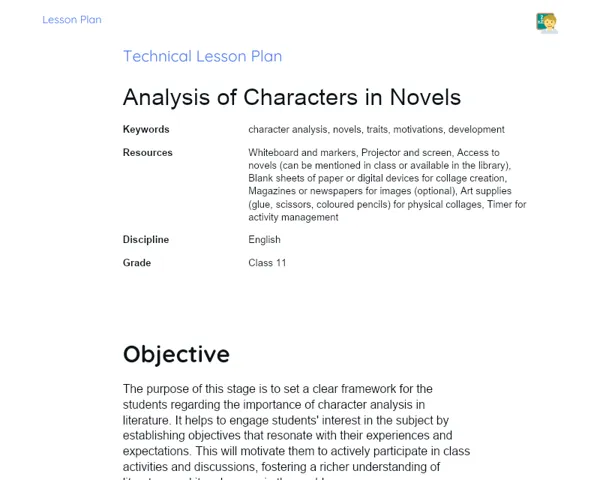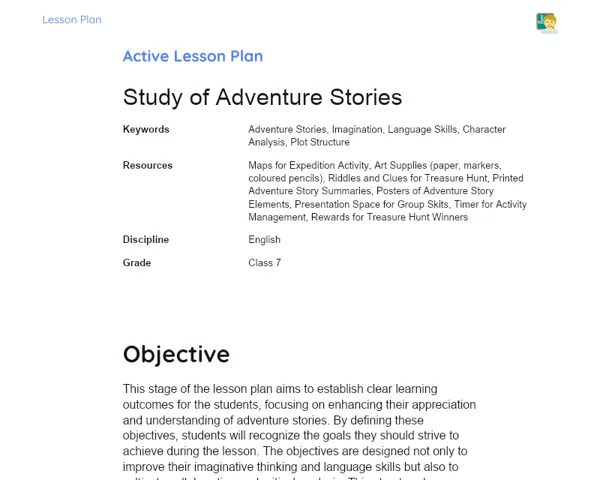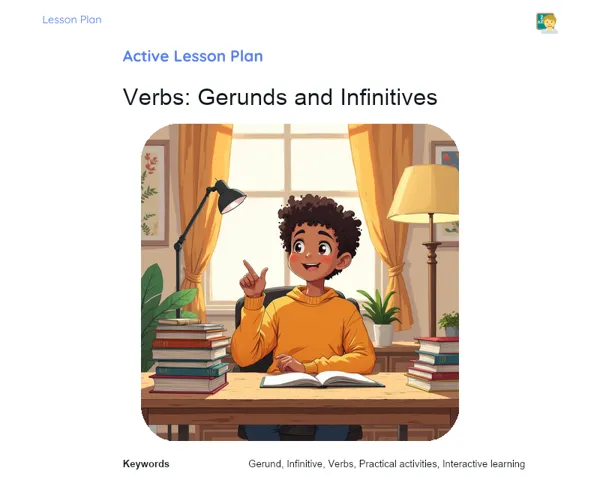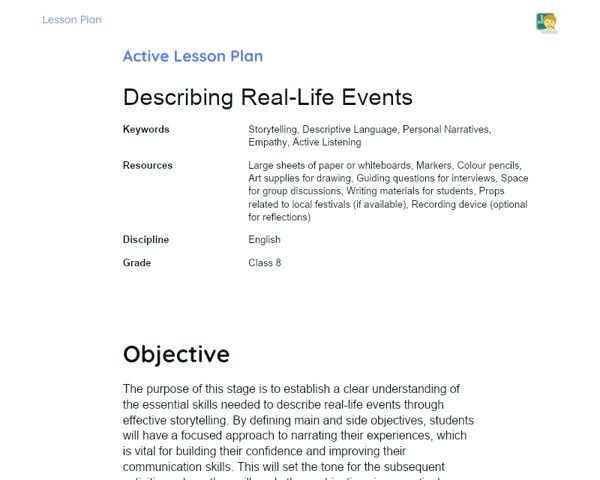Lesson Plan | Active Methodology | Imperative
| Keywords | imperative mood, effective communication, commands and instructions, practical application, real situations, interactive activities, group work, critical reflection, skill enhancement, cooking and kitchen, emergency scenarios, rescue drills, sports activities, group dialogues |
| Necessary Materials | printed recipes for the cooking session, ingredients for cake preparation, mannequin or prop imitating a victim for the rescue task, printed emergency simulation instructions, materials for setting up the accident scene, suitable space for simulations, writing and presentation tools |
Premises: This Active Lesson Plan assumes: a 100-minute class duration, prior student study both with the Book and the beginning of Project development, and that only one activity (among the three suggested) will be chosen to be carried out during the class, as each activity is designed to take up a large part of the available time.
Objective
Duration: (5 - 10 minutes)
Defining objectives is crucial as it provides a clear roadmap for both teachers and students about what is to be achieved during the lesson. By setting clear goals, students can direct their learning towards key aspects, while teachers can focus classroom activities on meeting these objectives. This also aligns expectations and ensures the learning done at home is efficiently practiced in the classroom.
Objective Utama:
1. Enable students to identify and properly use the imperative mood in English for commands, instructions, requests, and advice.
2. Enhance their ability to convert affirmative and negative sentences into the imperative mood, ensuring effective practice during classroom sessions.
Objective Tambahan:
- Foster active student participation in discussions and hands-on activities to deepen their grasp of the imperative mood.
- Encourage the use of critical and creative thinking skills when transforming sentences into the imperative mood.
Introduction
Duration: (15 - 20 minutes)
The Introduction stage aims to grab students' attention and create a seamless transition from previous studies to applying knowledge practically in the classroom. By presenting real-life problems, students are encouraged to think critically about how to apply the imperative mood, preparing them for upcoming tasks. Contextualizing the lesson emphasizes the significance of the imperative in real-life situations, boosting students' interest in the subject and showcasing its relevance in various everyday and professional scenarios.
Problem-Based Situation
1. Picture yourself in a restaurant wanting to order your meal politely. How would you use the imperative mood in English to make that request?
2. Consider a situation where quick and clear instructions are crucial. How would you express those commands in English using the imperative?
Contextualization
The imperative mood is an essential part of English, enabling effective communication in daily life, from making simple requests to issuing safety commands. For instance, airplane pilots frequently employ the imperative to ensure instructions are clear and prompt during emergencies. Additionally, grasping the imperative is vital for interpreting instruction manuals and recipes, which are often written using this mood. Mastering its use can be critical in numerous scenarios, making conversations more straightforward and effective.
Development
Duration: (65 - 75 minutes)
The Development phase is designed to let students practically and interactively apply their prior knowledge of the imperative mood in English. The planned activities aim to solidify students' comprehension through engaging, contextualized, and challenging situations where they can experience the imperative's use across various relevant scenarios. This method not only reinforces learning but also promotes collaboration, communication, and critical thinking skills.
Activity Suggestions
It is recommended that only one of the suggested activities be carried out
Activity 1 - Kitchen Command
> Duration: (60 - 70 minutes)
- Objective: To practice the imperative in an enjoyable and hands-on context, reinforcing the understanding and application of the imperative mood in English.
- Description: In this activity, students will split into groups of up to 5, with each group acting as a team of chefs in a fictional cooking competition. They will receive a straightforward recipe, such as a cake, that they must prepare by following instructions in the imperative mood. Each group member will take on a specific role in the kitchen (for instance, measuring ingredients, mixing batter, prepping the baking tray) and will use the imperative to give directions to their teammates.
- Instructions:
-
Organize the class into groups of up to 5 students.
-
Assign each group a task related to preparing the cake, with one task per student.
-
Each student should provide instructions to the other members using the imperative mood.
-
Students are to adhere to the recipe and the imperative commands to bake their cake.
-
At the culmination, each group will present their cake and discuss how they employed the imperative in their instructions.
Activity 2 - Rescue Mission
> Duration: (60 - 70 minutes)
- Objective: To develop the ability to comprehend and follow commands in emergency situations while reinforcing the use of the imperative in English.
- Description: Students will form groups, with each representing a rescue team in a critical situation. They will receive a set of instructions in English consisting of emergency commands given in the imperative mood. The challenge is to interpret these instructions and perform the necessary actions to 'rescue' a mannequin placed in a simulated accident setting within the classroom.
- Instructions:
-
Arrange students into groups of up to 5.
-
Distribute the rescue instructions written in the imperative mood to each group.
-
Set up an 'accident scene' in the classroom, featuring the mannequin requiring 'rescue'.
-
Students must decipher the instructions and execute the actions required to 'save' the mannequin.
-
Each group should prepare a short report outlining their actions, using the imperative mood to describe what they accomplished.
Activity 3 - Command Olympics
> Duration: (60 - 70 minutes)
- Objective: To practice the imperative in a lively and competitive setting, fostering skills to give and follow instructions in English.
- Description: Transform the classroom into a sports arena where each group of students represents a team in a given sport. They will use the imperative to 'train' their classmates acting as athletes, issuing commands that resemble a proper training session. The objective is to effectively use the imperative to enhance the performance of the 'athletes'.
- Instructions:
-
Divide the class into groups and assign each a distinct sport to 'train'.
-
Groups must strategize and practice the imperative commands they plan to use during the training session.
-
Each group will conduct their 'training' session with another group playing the role of athletes, employing the imperative for commands.
-
Post-training, host a 'competition' where each athlete must accurately follow the imperative instructions given.
-
Wrap up with a discussion regarding the effectiveness of the imperative commands employed in each sport.
Feedback
Duration: (10 - 15 minutes)
The feedback stage allows students to reflect on both their practical and theoretical learning of the imperative mood in English. By engaging in group discussions, they can articulate and share their understanding, aiding in knowledge retention. Moreover, the key questions foster deeper comprehension of the imperative mood's applicability across various scenarios, encouraging critical thought regarding its use and significance in daily life.
Group Discussion
To start off the group discussion, the teacher can prompt each group to share their main takeaways from the activities. Encourage them to talk about what challenges they faced and what strategies helped improve their understanding and use of the imperative mood. Urge students to reflect on the differences between practical activities and theoretical learning and how this affects their learning experience.
Key Questions
1. What were the main challenges faced when using the imperative mood during the activities, and how did you overcome them?
2. How can the imperative be applied in real-life scenarios beyond the classroom?
3. Can you think of any situations where using the imperative might lead to misunderstandings, and how could this be addressed?
Conclusion
Duration: (5 - 10 minutes)
The conclusion serves to ensure students possess a well-rounded and reinforced understanding of the material covered throughout the lesson. Summarizing the key points strengthens their knowledge retention, while discussing the link between theory and practice and the real-world significance of the learned material raises awareness of its importance. This stage also provides an opportunity to clarify any outstanding queries and reaffirm the relevance of the acquired knowledge, thus wrapping up the lesson satisfactorily.
Summary
In this conclusion, the teacher should recap the primary points discussed concerning the imperative mood in English, touching on its various applications for expressing commands, instructions, requests, and advice. It is important to highlight how students implemented these concepts effectively during hands-on activities, contributing to their learning consolidation.
Theory Connection
Today's lesson successfully linked theory with practice, enabling students to not only grasp the structure and function of the imperative mood but also to utilize it in diverse scenarios, from kitchen settings to emergency simulations. This hands-on approach enhanced their theoretical understanding through direct experience.
Closing
Finally, it is key to stress the importance of the imperative mood in our daily lives. The ability to articulate commands and instructions clearly is vital, not only in personal exchanges but also in professional and academic settings. Being adept in using the imperative enhances interaction and leadership skills in various everyday and workplace scenarios.



